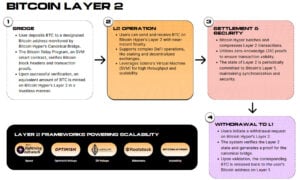Laos is leveraging its hydropower surplus to explore cryptocurrency mining amid rising national debt.
The government seeks to monetize excess electricity, generating foreign currency while diversifying state revenue sources.
Monetizing Hydropower Surplus to Service National Debt
Laos faces one of the highest debt-to-GDP ratios in Southeast Asia, largely due to large-scale hydropower projects financed through international loans, primarily from China. Dubbed the “Battery of Southeast Asia,” the country produces more electricity than domestic demand and export capacity can absorb. Peak rainy seasons exacerbate the surplus, leaving the state utility, Électricité du Laos (EDL), with underutilized energy.
Sponsored
Sponsored
In response, the Ministry of Technology and Communications (MTC) is developing a framework for digital asset mining, aiming to convert stranded hydropower into US dollar-denominated cryptocurrency revenue. Licensed mining operations would pay fixed electricity fees, creating a predictable fiscal mechanism to service debt obligations.
By channeling excess power into Bitcoin and other digital assets, the government intends to establish a high-value demand for otherwise idle energy. This move represents an official endorsement of a sector historically marginalized or regulated inconsistently across Southeast Asia, positioning digital mining as a strategic financial lever.
Regulatory Framework and Licensing Initiatives
To support the mining initiative, Laos has introduced a formal licensing system for large-scale cryptocurrency miners and local trading platforms. The regulatory structure is designed to attract foreign investment, particularly from regions where mining faces restrictions, bringing both capital and technical expertise into the Lao economy.
Domestic financial institutions are preparing to facilitate compliant conversions of mined digital assets into fiat currency. By formalizing mining operations, the government aims to monitor energy use, collect taxes, and ensure regulatory compliance.
Critics, however, caution that even hydropower-based mining carries ecological and social risks. The government maintains that renewable energy minimizes environmental impact, yet large-scale operations may still stress the grid and necessitate additional infrastructure or compromise essential domestic energy use.
Grid Stability and Environmental Concerns
Experts and environmental groups have raised concerns regarding grid stability and ecological impact. Despite frequent hydropower surpluses, the domestic transmission network remains sensitive, and prioritizing energy-intensive mining could disrupt local consumption. Non-peaking, continuous energy demand may reduce buffer capacity, exposing the grid during dry seasons or equipment failures.
Hydropower development has already affected river ecosystems and downstream agriculture, with displacements and social disruption for local communities. Critics argue that allocating electricity to speculative digital assets risks undermining long-term sustainability in favor of short-term debt relief. The Lao government faces the challenge of balancing high-value crypto operations with grid stability and ecological stewardship, ensuring that financial gains do not compromise local welfare or environmental resilience.
Source: https://beincrypto.com/laos-taps-hydropower-surplus-for-cryptocurrency-mining/



